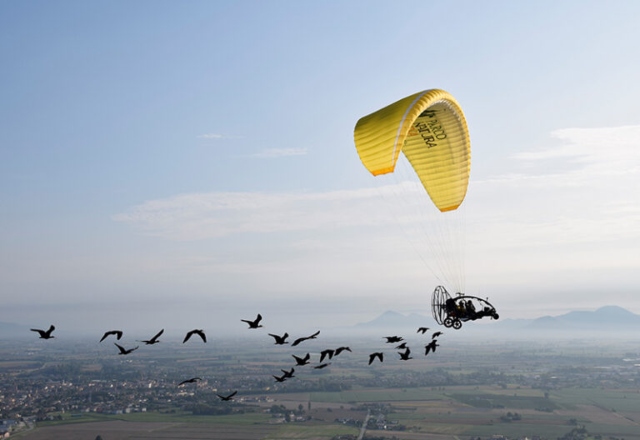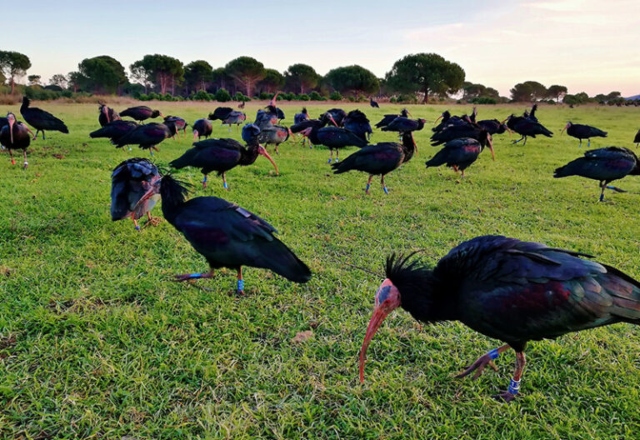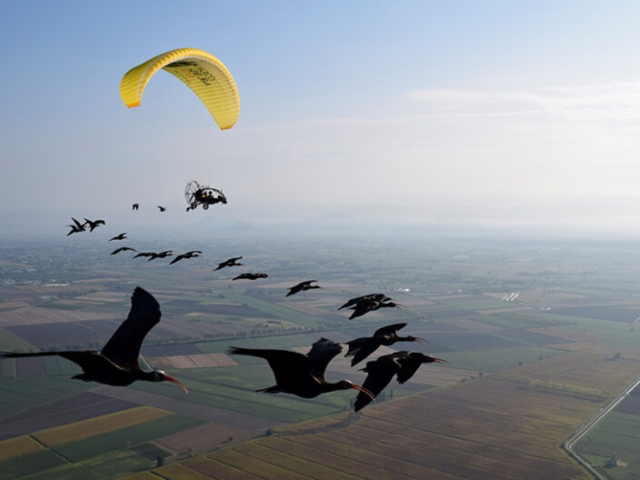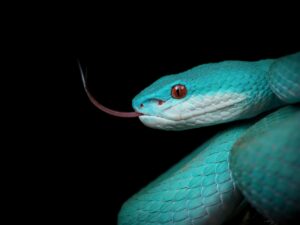[imagesource:waldrappteam]
Inspired by a classic 1996 movie Fly Away Home, two conservationists are teaching endangered Northern Bald Ibises to fly south for the winter by accompanying them on their 2,800-kilometer journey.
Biologists Barbara Steininger and Helena Wehner took to the skies onboard a microlight aircraft in Rosegg, Austria, in mid-August to guide their young charges on the birds’ first migration, which ended on 3 October at a wintering site in Andalusia, Spain.
For six months prior, Steininger and Wehner spent every day hand-feeding and raising dozens of these endangered chicks. They couldn’t pass their fostering duties off to anyone else during that time as the juvenile birds needed to imprint on them and them alone.
“At the end, you have to release them in the wintering site and accept that they are now independent and don’t need you anymore,” says Johannes Fritz, who leads the Waldrapp team reintroducing Northern Bald Ibises to the wild in Europe and has been piloting the microlight aircraft on these guided migrations since 2004.

Normally, parents would accompany their children on their first migration to show them the path. However, the birds’ knowledge of their flight path has mostly been forgotten because the species has been hunted almost to extinction in its natural habitats of North Africa, Central Europe, and the Middle East.
Today, thanks to careful management and reintroduction efforts, some small sedentary (nonmigrating) populations live in the wild in Türkiye and Spain. But their inability to migrate might actually threaten their survival as migratory birds evolved to reproduce in one climate and spend the winter in another.

The movie was based on the work of the late Bill Lishman, a filmmaker who used a microlight to teach captive-raised birds to migrate. Lishman also co-founded Operation Migration, an organization that deployed bird-costumed scientists to guide endangered birds such as Whooping Cranes, once nearly extinct, on migratory routes across North America.
The microlight is powered by a propellor and kept in the air by a large yellow parachute, which allows it to fly at the speed of birds – no faster than 50 kilometres per hour. The flying contraption seats two people – Fritz, who got his pilot’s license for this very purpose, along with either Steininger or Wehner, who trade off on sky duties.
Taking off, the foster parent would shout in German for the birds to follow, crying “Komm, komm!” above the engine drone. Once in the air, the birds may occasionally approach the aircraft and welcome their travelling partners by moving their beaks up and down and crying out. Once greeted, the birds take their place in the formation and the journey begins.
“It’s very emotional, I have the privilege to experience this in the sky.”
Called human-led migration, it seems to be working for the Bald Ibises. All 36 birds arrived in Andalusia earlier this month where they will be joining an existing group of reintroduced Northern Bald Ibises to spend their first balmy winter in the wild.
The original human-led migration organization, Operation Migration, flew with Whooping Cranes from Wisconsin to Florida from 2001 through 2015. It restored a migrating population of the birds, but they didn’t reproduce successfully enough to reach a self-sustaining population. The U.S. Fish and Wildlife Service ultimately pulled its support from the project.
“There was a lot of scepticism in the early years of the project,” Fritz says. “Meanwhile I think the scientific community and the conservationists recognise the potential of the methods.”
“It’s clear that the extinction of the Bald Ibis is the responsibility of the humans. I think it’s worth doing whatever possible.”
Methods like these might become increasingly important as climate change continues to alter how birds migrate and where they spend their winters.
[source:scientificamerican]





